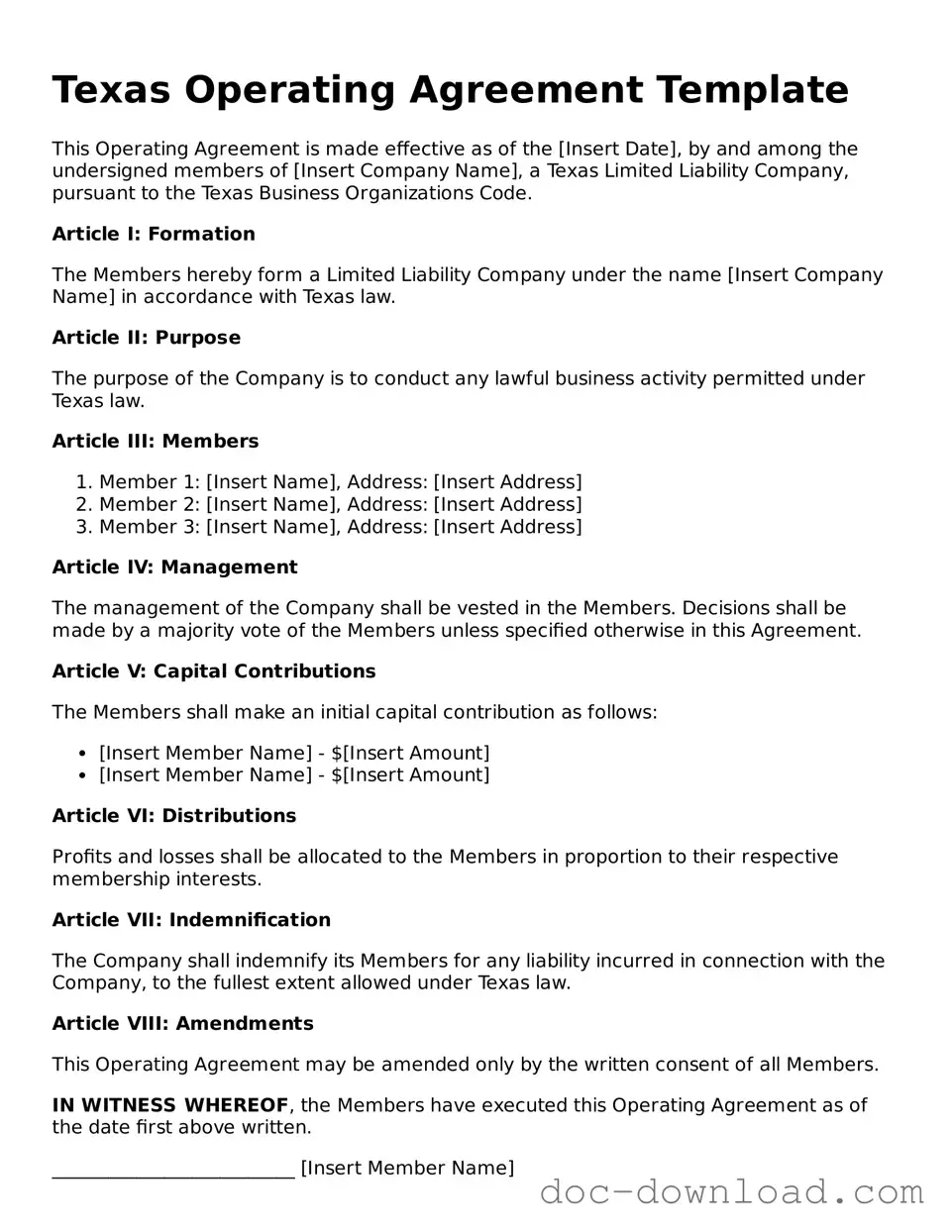The Texas Operating Agreement is similar to a Partnership Agreement. Both documents outline the roles, responsibilities, and contributions of each partner or member involved in a business. While the Operating Agreement is specific to Limited Liability Companies (LLCs), a Partnership Agreement is tailored for partnerships. Each document serves to clarify the expectations and obligations of the parties, helping to prevent misunderstandings and disputes down the line.
Another document that shares similarities with the Texas Operating Agreement is the Bylaws for corporations. Like an Operating Agreement, Bylaws provide a framework for how a business will operate. They detail the governance structure, including the roles of directors and officers, and outline procedures for meetings and decision-making. Both documents are essential for establishing order and ensuring that all parties understand their rights and responsibilities.
A Shareholders Agreement is also akin to the Texas Operating Agreement. This document is used by corporations to define the relationship between shareholders, including their rights, obligations, and the process for transferring shares. Just as an Operating Agreement lays out the terms for members of an LLC, a Shareholders Agreement helps protect the interests of shareholders and provides a clear roadmap for resolving disputes.
When dealing with various legal forms and agreements, such as the Texas Operating Agreement, it is essential to ensure that all documents are comprehensively understood and utilized. For those looking to learn more about similar forms that may be required in Georgia, resources like Georgia PDF Forms can provide valuable insights and guidance, helping to navigate the complexities of these important legal documents.
The Joint Venture Agreement is another document that mirrors the Texas Operating Agreement. It is created when two or more parties come together for a specific business purpose. This agreement outlines the contributions, responsibilities, and profit-sharing arrangements of each party. Similar to an Operating Agreement, it helps ensure that everyone involved understands their role and what is expected of them.
A Limited Partnership Agreement is also comparable to the Texas Operating Agreement. This document is used when a partnership includes both general and limited partners. It specifies the roles, liabilities, and profit-sharing arrangements for each type of partner. Like the Operating Agreement, it serves to protect the interests of all parties and provides clarity on how the partnership will function.
The Membership Interest Purchase Agreement is another related document. This agreement is used when a member of an LLC wants to sell their interest in the company. It outlines the terms of the sale, including the purchase price and any conditions that must be met. Similar to an Operating Agreement, it helps define the rights and obligations of the members involved in the transaction.
A Confidentiality Agreement, or Non-Disclosure Agreement (NDA), shares some commonalities with the Texas Operating Agreement. While it primarily focuses on protecting sensitive information, it often accompanies other agreements like Operating Agreements. Both documents help establish trust among parties and clarify expectations regarding confidentiality and information sharing.
The Employment Agreement is also relevant in this context. While it specifically pertains to the relationship between an employer and employee, it often includes terms that can overlap with an Operating Agreement, such as duties, compensation, and termination conditions. Both documents aim to create a clear understanding of roles and responsibilities within the business structure.
The Franchise Agreement is another document that has similarities with the Texas Operating Agreement. This agreement outlines the terms under which a franchisee can operate under a franchisor's brand. Like an Operating Agreement, it details the rights and responsibilities of each party, ensuring that both sides understand what is expected in the business relationship.
Finally, the Business Plan can be viewed as a companion document to the Texas Operating Agreement. While a Business Plan outlines the strategic direction and operational plans of a business, the Operating Agreement provides the structural framework. Both documents are essential for guiding the business and ensuring that all stakeholders are aligned in their vision and goals.
